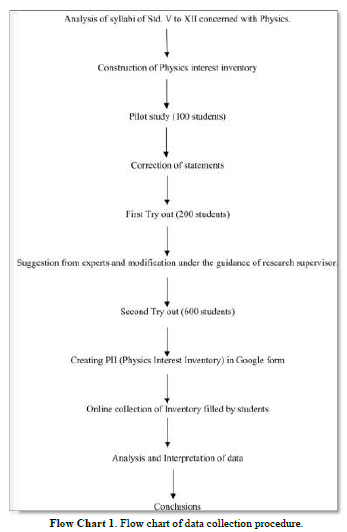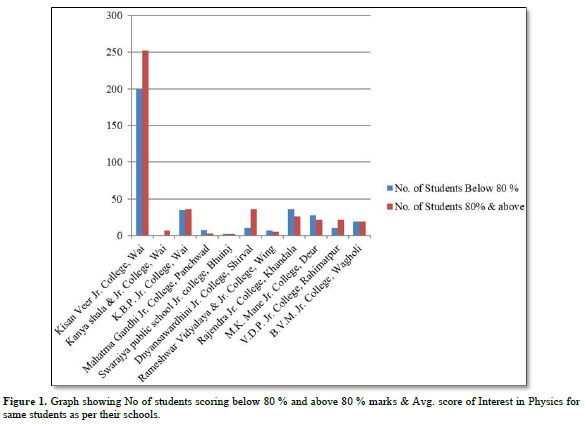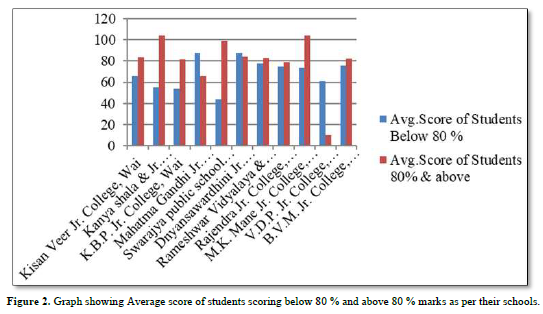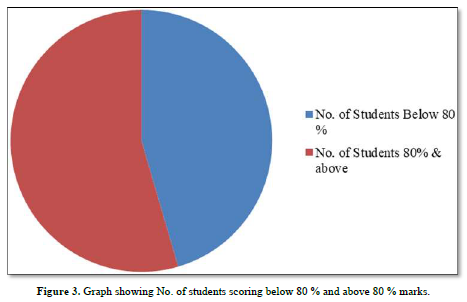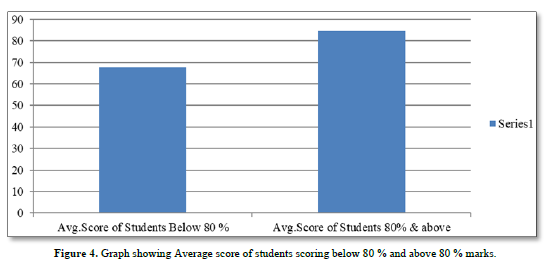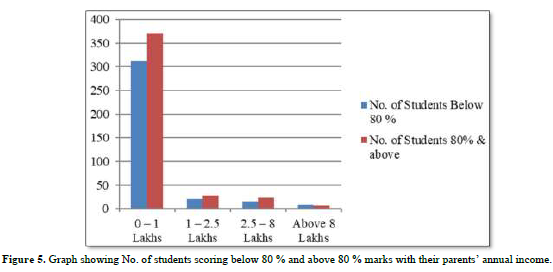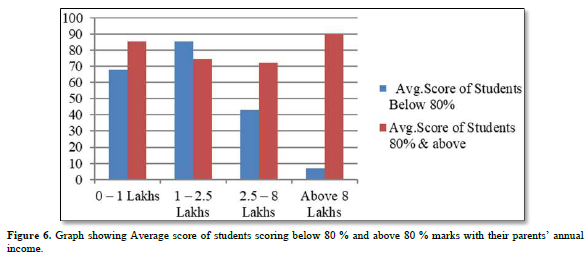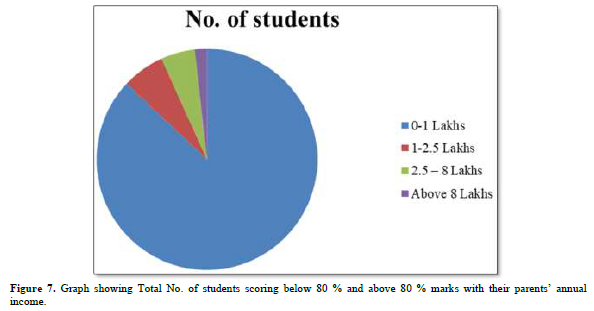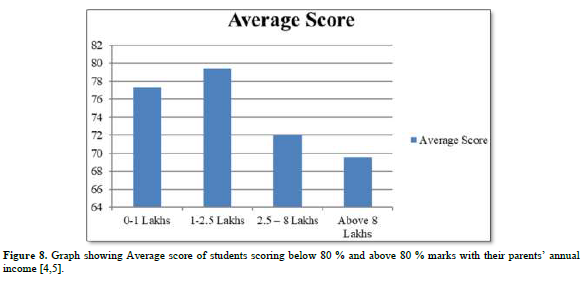90
Views & Citations10
Likes & Shares
The present study aims to compare interest in physics at +2 level of students scoring below 80 % and Above 80 % Marks at SSC in Maharashtra. At +2 level in science stream physics is the most important subject. It plays major role in different competitive examinations. Physics is compulsory subject for all examinations. There are different examinations at national level i.e. NEET, JEE (mains and advance). At state level MHT-CET is held for engineering, agriculture and pharmacy admissions. For students at this stage, they feel that physics is challenging subject. To achieve the success in competitive examinations students must obtain good score in physics. Our main aim is to increase the interest of students in physics.
OBJECTIVES OF THE STUDY
For the present study following are the objectives of study:
- To compare the interest of students scoring below 80 % and above 80 % marks at SSC in Maharashtra.
- To compare the interest of students scoring below 80 % and above 80 % marks at SSC in Maharashtra as per their Parents income / financial condition.
Sample
For current study researcher selected population from three Tahsils (Wai, Khandala & Koregaon) from Satara district by random sampling method [2]. From these three Tahsils he visited 11 junior colleges. The XII Std Science students from these colleges were selected randomly (Table 1).
Out of these total 785 students 635 students are from rural background and 150 students are from urban background. The number of male and female students is 350 and 435 respectively. From the students total 147 English medium, 205 Marathi medium, 431 Semi-English and 2 Urdu medium have their medium of study up to 10th level. As per financial condition is concerned the annual income of parents is as below. Rs 0 - 1,00,000, 683 students, Rs 1,00,001 - 2,50,000, 49 students, Rs 2,50,001 - 8,00,000, 39 students and above Rs 8,00,000, 14 students. 357 students have their 10th percentage below 80 % and 428 students have their 10th percentage above 80 %.
DATA COLLECTION PROCEDURE
For measuring the interest in Physics researcher adopted the following procedure (Flow chart).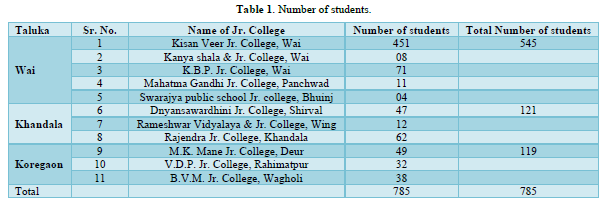
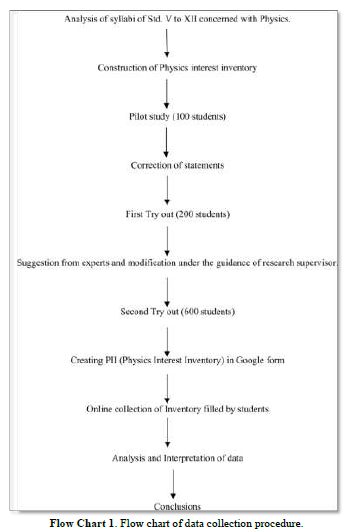
As per above flow chart initially researcher studied all syllabus from std Vth to XIIth related with physics. Researcher himself is working in Kisan Veer Jr. college, Wai at +2 level as an assistant teacher in physics. Then he constructed Physics Interest Inventory (PII) containing 145 statements. The option for the statements is Like(L), Indifferent (I) and Dislike (D). Then he conducted pilot study of PII on 100 students. After discussion with experts & students researcher made some corrections. Then he conducted the first try out on 200 students from Shirval, Tal- Khandala & Wai, Tal- Wai of Satara district. He analyzed the result and by taking opinion of students, teachers and experts he modified the interest inventory. Then he developed the Google form of it. Then from three Tahsils namely Wai, Khandala and Koregaon of Satara district he conducted the survey in 11 Junior colleges. Total 785 students participated. Then in analysis he allotted 1 mark for Like(L), 0 mark for Indifferent(I) and -1 mark for Dislike(D). After that he calculated the physics interest scores of all students by using Microsoft Excel [3].
Then for analysis of data by using Microsoft Excel researcher compared the scores of students scoring below 80 % and above 80 % marks at SSC in Maharashtra.
- Schools of the students.
- Financial condition of the parents.
Analysis of data
Researcher used average scores of students with above attributes. In addition to that He prepared Graphs i.e. Pie diagram, Bar Graphs & Histograms.
Table 2 and Figures 1 & 2 showing No of students scoring below 80 % and above 80 % marks & Avg. score of Interest in Physics for same students as per their schools.
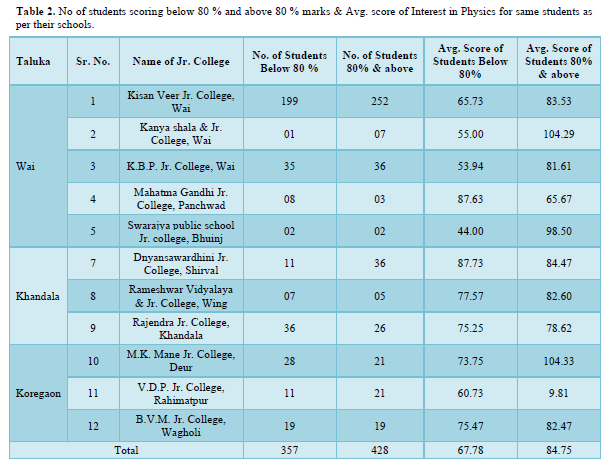
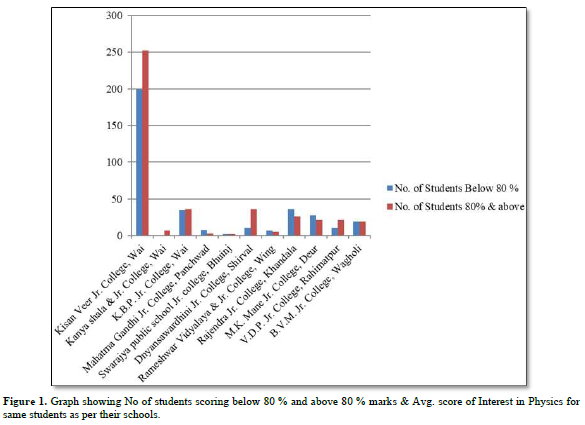
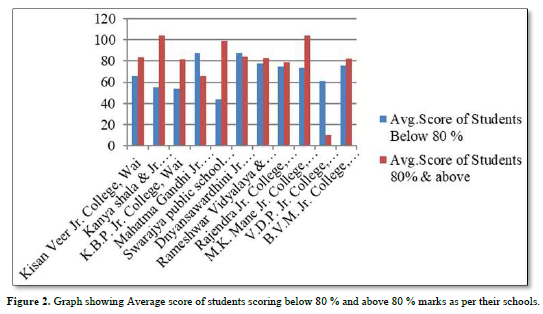
By observing or calculating the averages he observed following scores (Table 3 and Figures 3 & 4).

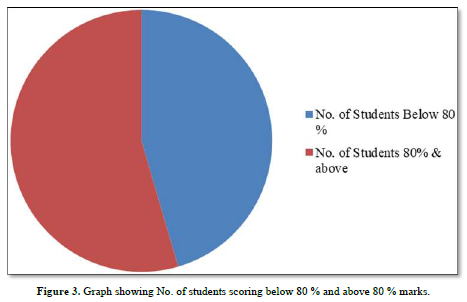
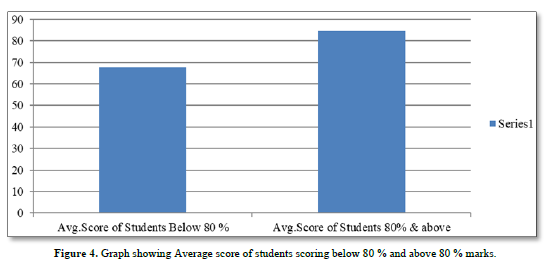
Table 4 and Figures 5 & 6 showing No of students scoring below 80 % and above 80 % marks at SSC & Avg. score of Interest in Physics as per their parent’s income level.
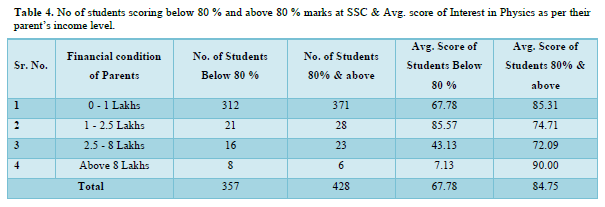
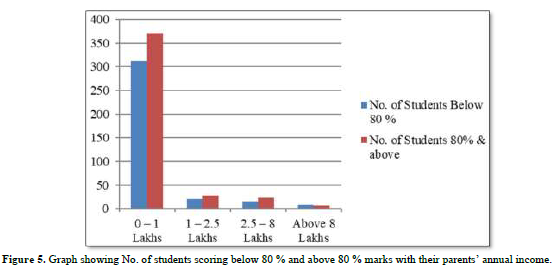
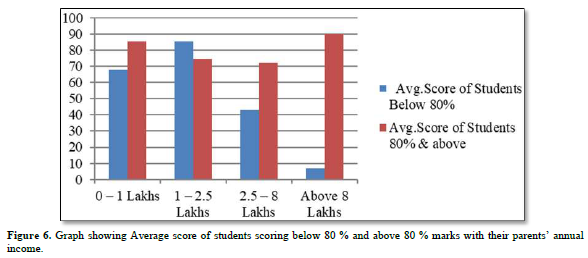
Table 5 and Figures 7 & 8 showing the average scores for students considering the income level of parents i.e. 0 - 1 Lakh, 1 - 2.5 Lakh, 2.5 - 8 Lakh & above 8 Lakh.

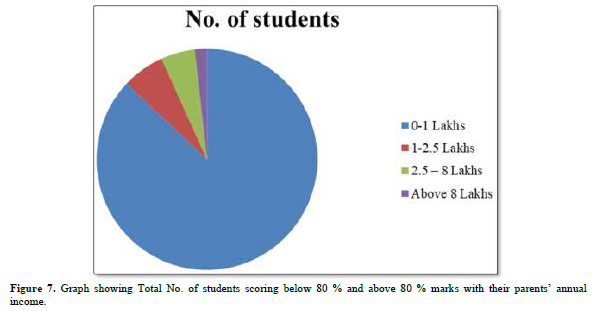
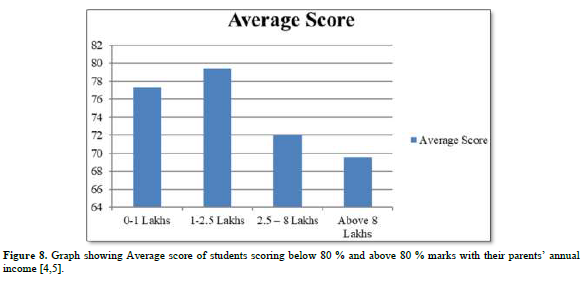
CONCLUSIONS
The students whose parent income is in between 1-2.5 Lakhs (Avg. 79.37) have more interest in Physics as compared to other students.The students whose parent’s income is above 8 Lakhs (Avg. 69.57) have less interest in physics as compared to other students.
The students whose score is 80 % and above it (Avg. 84.75) has more interest in Physics.
The students whose score is below 80 % (Avg. 67.78) have less interest in Physics.
- Kothari C (1990) Research Methodology. New age international, Mumbai. Available online at: https://ccsuniversity.ac.in/bridge-library/pdf/Research-Methodology-CR-Kothari.pdf
- Kumar R (2011) Research Methodology. New Delhi. Sage Publication. Available online at: https://rauterberg.employee.id.tue.nl/lecturenotes/DBB150/references/Kumar2011%20Research%20Methodology-ed3.pdf
- Bhandarkar K (2006) Statistics in Education (made easy). Hyderabad. Neelkamal publications. Available online at: https://www.neelkamalbooks.com/books/statistics-in-education/
- Jadhav V (1998) Preparation and standardization of an interest inventory for Educational Technology.
- Sali VZ (1998) Ph.D. Thesis. Construction and standardization of unit tests in physics for pupils of standard VIII.
QUICK LINKS
- SUBMIT MANUSCRIPT
- RECOMMEND THE JOURNAL
-
SUBSCRIBE FOR ALERTS
RELATED JOURNALS
- Archive of Obstetrics Gynecology and Reproductive Medicine (ISSN:2640-2297)
- Chemotherapy Research Journal (ISSN:2642-0236)
- Journal of Allergy Research (ISSN:2642-326X)
- International Journal of Radiography Imaging & Radiation Therapy (ISSN:2642-0392)
- Journal of Rheumatology Research (ISSN:2641-6999)
- Journal of Blood Transfusions and Diseases (ISSN:2641-4023)
- Journal of Nursing and Occupational Health (ISSN: 2640-0845)

